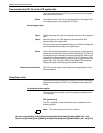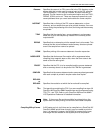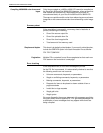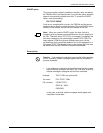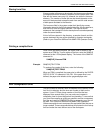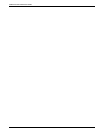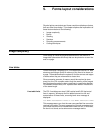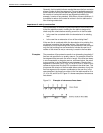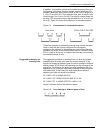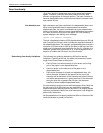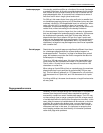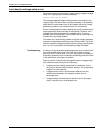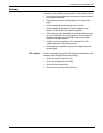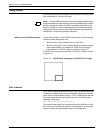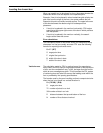
FORMS LAYOUT CONSIDERATIONS
5-2 XEROX DOCUPRINT 96/DOCUPRINT 96MX LPS FORMS CREATION GUIDE
Generally, the line table limits are reached because the form contains
a large number of short line segments. The most probable reason for
this is a series of vertical lines that are aligned vertically (for example,
tick marks) or horizontal lines that are aligned horizontally (for
example, a series of long dashes). With either of these conditions, it
is possible to reduce the number of entries in the line table as the
form is being constructed.
Importance of orderly construction
One consideration in determining the orderliness of form construction
is that the algorithm used in loading the line table is designed to
check only two criteria before entering a new line in the line table:
• Is the new line contained within the boundaries of an existing
line?
• Is the new line an extension of one of the existing lines?
If the new line is contained within the boundaries of an existing line,
no change is made to the line table entries. If the new line is an
extension of one of the existing lines, the boundaries of the first (and
only the first) existing line are extended to include the new line. If
neither of the criteria is met, a new entry is made in the line table.
Examples The procedure of line extension results in an interesting irregularity if
lines are not specified in an orderly manner. For example, draw five
line segments that are each five units in length. If the lines are drawn
in an unreasonable or irregular manner, as shown below, the result
is more entries in the line table than are necessary. Drawing line
segments in the order 0 to 5, 10 to 15, 20 to 25, 5 to 10, and 15 to 20
creates a single visual line that FDL considers to be three lines. This
is because the criterion of the line table allows extension of only the
first line segment with common coordinates to the new line. In the
case described, the three line entries in the line table would be 0 to
10, 10 to 20, and 20 to 25. Figure 5-1 shows examples of extraneous
lines drawn.
Figure 5-1. Example of extraneous lines drawn



